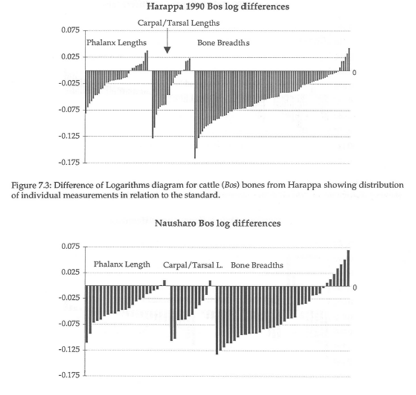From the article
"Excavations at the third millennium BCE urban site of Harappa (Punjab, Pakistan) have produced a large quantity of mammal bone remains. Two features of this material-bone measurements and density of bone in excavation units are considered from the point of view of using aspects of assemblage variability to document faunal exploitation and site formation processes. Measurements of cattle, sheep, and goat bones from Area C on the south side of Mound E are compared with those documented from earlier levels at the site of Mehrgarh and contemporary levels at Nausharo (Baluchistan, Pakistan). The results suggest that different breeds of sheep and cattle may have been kept in the two regions during the Harappan phase. The density of bone deposited in Street NS2355, when considered in combination with the nature of the street deposits and adjoining architecture, permits one to monitor the cycle of urban life in that part of Harappa. It appears that only during Period 2 (or early Period 3A) and late in Period 3B was the street actively maintained or reconstructed. At other times it served as an open sewer, acted as a dump for debris from nearby households, or fell out of active use as a thoroughfare."
Chapter 7 of Harappa Excavation Reports 1986-1990

